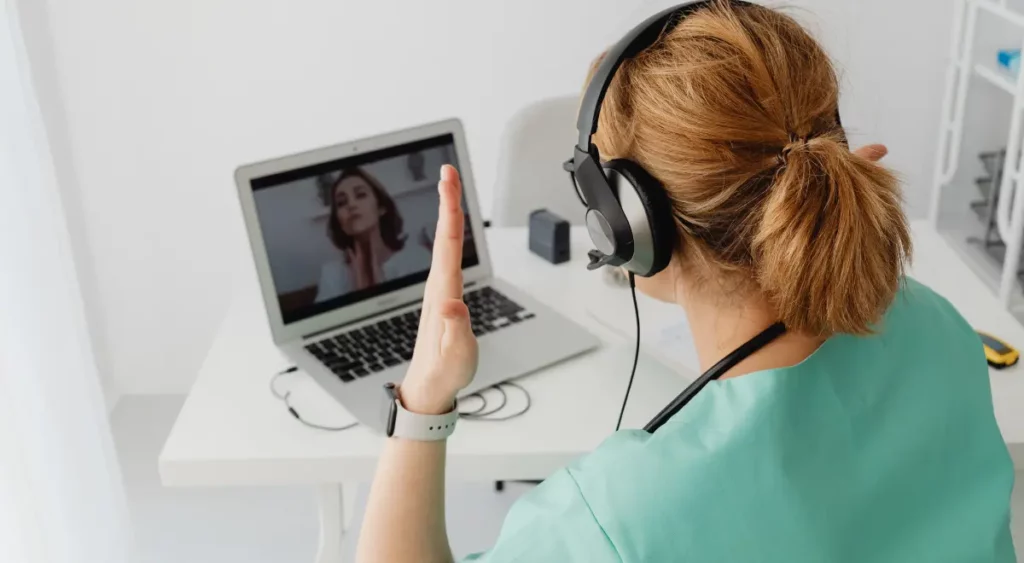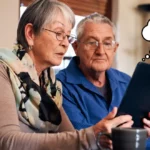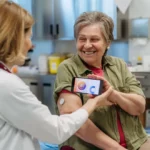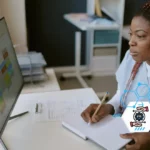Hospital-at-Home Care and Remote Patient Monitoring: The Future of Healthcare at Your Doorstep

With the adoption of remote patient monitoring models, the healthcare industry is undergoing significant changes in terms of patient treatment and outcomes. The COVID-19 pandemic accelerated this remote patient monitoring process and the latest technological developments helped the care delivery model in moving beyond the brick-and-mortar walls of hospitals. With this emerging trend, we are witnessing two innovative models gaining trends, both among patients and providers, Hospital-at-Home (HaH) and Remote Patient Monitoring (RPM).
These models are shifting our healthcare system from reactive, facility-based care to proactive, home-centered care. Both HaH and RPM have shown to improve outcomes and reduce costs while allowing patients to heal at home where their dignity and comfort of being surrounded by loved ones is preserved.
The rise of these new care models indicates a shift in how healthcare organizations provide remote care services to patients. In this blog, we’ll discuss how these care models works, who they are designed for, and what the future holds for them.
Table of Contents
ToggleWhat is Hospital-at-Home Care?
Hospital-at-Home (HaH) is a model that provides hospital-level treatment to patients from the comfort of their own homes. HaH is targeted at people in need of acute care and is stable enough to not require continuous supervision from hospital staff.
HaH covers patient care delivery outside the walls of the hospital for conditions, such as diagnostics, monitoring, medications, IV therapy, nursing care, and physician oversight.
This method was originally introduced in the late 1990s through programs like the Johns Hopkins Hospital-at-Home model. It has gained popularity for home hospital care and was promoted by the Centers for Medicare & Medicaid Services (CMS) through the “Acute Hospital Care at Home” waiver in response to the COVID-19 pandemic, allowing hospitals to obtain reimbursement for qualifying home-based services.
Hospital-at-Home programs deliver care to patients with a range of diagnoses, including:
- Chronic obstructive pulmonary disease (COPD)
- Congestive heart failure (CHF)
- Community-acquired pneumonia
- Cellulitis and other skin infections
- Post-surgical monitoring of conditions requiring IV antibiotics
- Dehydration or similar disorders requiring IV fluids
All HaH patients require both clinical visits (e.g., physicians, nurse practitioners, physician assistants) and continuous patient monitoring, which allow the care team to obtain timely notifications of relevant patient changes.
What is RPM, or Remote Patient Monitoring?
RPM, or Remote Patient Monitoring, refers to the use of digital technologies to collect, track, and analyze health data from patients remotely, i.e. outside the traditional clinical settings. Remote patient monitoring has become a necessity for modern, digitally-enabled care that patients with chronic illnesses or those recovering from acute conditions need.
RPM includes the following:
- Vitals monitoring: Devices that track blood pressure, oxygen levels, glucose levels, weight, heart rate, and temperature.
- Real-time alerts: Automated systems that notify the healthcare provider when readings are outside the safe range.
- Integration with telehealth: Patients can have video calls with clinicians or send messages through secure digital health platforms.
- Data analytics: Data can be analyzed to determine what is normal for a patient, predict what may happen next, and help clinicians make treatment decisions.
Unlike episodic clinic visits, RPM provides a continuous flow of health data to support early intervention and prevent complications.
How Remote Patient Monitoring Enhances Hospital-at-Home Programs
While Hospital -at Home and Remote Patient Monitoring can operate independently, their integration creates a robust care model that mimics the intensity and responsiveness of acute inpatient care. Here’s how they work collaboratively:
- 24/7 Monitoring Outside of Hospital Walls: Providers using RPM devices can monitor a patient’s condition around the clock. For example, a patient recovering from pneumonia at home may wear a biosensor patch that tracks respiratory rate and oxygen saturation. If the data suggests deterioration, a nurse or physician can intervene immediately.
- Personalized, Data-Driven Interventions: RPM enables clinicians to make timely, informed decisions based on real-time data. Rather than waiting for appointments or self-reported symptoms, care teams can detect subtle changes and intervene early, while treatment is still effective.
- Reduced Hospital Readmissions: Hospital readmissions are costly and often preventable. RPM enables closer post-discharge follow-up and can detect early signs of complications such as infection or dehydration. With timely engagement, many patients can avoid emergency room visits or rehospitalizations.
- Increased Patient Engagement: Patients using RPM tools are more actively engaged in their recovery when they receive regular feedback from their care teams. Many platforms provide educational content, medication reminders, and user-friendly dashboards with clear progress indicators.
- Effective Resource Allocation: Hospital beds are often scarce, especially during public health emergencies. HaH, supported by RPM, allows healthcare systems to reserve in-hospital care for the most critical cases while delivering high-quality care to others in their homes.
Why Hospital-at-Home Works Better with RPM Technology
- Superior Clinical Outcomes
Multiple evaluations indicate HaH is associated with similar or better outcomes than hospital-based care. Notable clinical benefits for HaH patients include:
-
- Fewer hospital-acquired infections
- Reduced immobility-related issues (e.g., blood clots, pressure ulcers)
- Improved recovery times
- Less delirium (especially in older adults)
When combined with RPM, these outcomes are further enhanced through continuous assessment and timely intervention.
- Cost Savings for Patients and Providers
Hospital care is expensive. From bed usage to staff overhead, hospitalization can become a significant financial burden. HaH programs significantly reduce these costs. A study in Health Affairs found an average 38% cost reduction for HaH patients. When RPM is added, efficiency increases, requiring fewer in-person interventions and reducing emergency assessments.
- Higher Patient Satisfaction
For many, home is a healing environment. Familiar surroundings, autonomy, and proximity to loved ones contribute to higher satisfaction levels. Surveys show that HaH patients are more likely to recommend their care experience than those treated in hospitals.
- Expanded Access to Care
In-patient hospitalization and RPM help break down geographic and logistical barriers to care. In rural areas, where hospitals may be hours away or for individuals with mobility challenges, these models enable access to hospital-level care without the need to travel.
- Supports Chronic Disease Management
While HaH focuses on acute care, RPM is particularly beneficial for managing chronic conditions, including:
-
- Diabetes
- Hypertension
- Heart failure
- Asthma
- Sleep Apnea
- Obesity
Consistent monitoring and coaching help patients manage their conditions effectively, resulting in fewer emergency visits and better long-term health.
Technologies Supporting Remote Patient Monitoring Models
Although HaH and RPM are similar in how they deliver care, the technological tools supporting them vary. Technology plays a critical role in the success of both models and includes:
- Wearable devices: Biosensors, smartwatches, and patches that collect biometric data
- Bluetooth medical devices: Glucometers, pulse oximeters, blood pressure cuffs, weight scales
- Mobile health apps: Platforms for symptom reporting, care instructions, and clinician communication
- Cloud-based dashboards: Real-time data access for clinicians via a unified health platform
- AI-based analytics: Tools that identify anomalies, predict deterioration, and support clinical decisions
Security and privacy are paramount in the healthcare industry. Platforms must be HIPAA-compliant to ensure patient data is protected, thereby fostering trust in technology-based care.
The Future of Home-Based Healthcare
Hospital-at-Home and RPM are not temporary fixes; they are reshaping the healthcare delivery model. As healthcare systems continue to shift toward value-based care, home-centered programs are expected to gain significant momentum in the coming years. Emerging trends in the future of RPM and HaH include:
- AI integration for predictive care
- Expanding HaH to support riskier post-surgical recoveries
- Use of drones and robotics for medication delivery
- Wider adoption of interoperable health platforms
It is expected that more health systems, payers, and policymakers will invest in these models to improve outcomes, reduce costs, and elevate patient experiences.
Conclusion: Deliver Convenient Care With HealthArc’s RPM Platform
Hospital-at-Home services and Remote Patient Monitoring are transforming modern healthcare by offering safer, more cost-effective, and patient-centered care options. These models help providers deliver acute and chronic care directly in the home, easing the burden on hospitals and improving patient outcomes.
HealthArc is a comprehensive, real-time remote patient monitoring and care coordination platform that enables health systems and providers to track vitals, manage care delivery, and engage patients through a user-friendly digital interface. With full EHR integration, customizable RPM kits, and AI-backed analytics, HealthArc empowers healthcare organizations to scale HaH programs and chronic disease management effectively.
It enables continuous RPM during HaH via pre-configured, cellular devices for vitals tracking (e.g., BP, pulse ox, glucose). Ready to offer acute-level care to patients? Schedule a demo now to see how
HealthArc helps you build compliant, scalable Hospital-at-Home and RPM programs.
Frequently Asked Questions (FAQs)
HaH and RPM are most suitable for chronically ill patients, including:
- Older adults with chronic illness and a higher risk of hospitalization
- Post-surgical patients needing short-term recovery at home
- Patients with acute but manageable illnesses like pneumonia or cellulitis
- Rural or underserved populations lacking nearby healthcare facilities
- Patients with mobility or transportation limitations
Assessments are conducted to evaluate the home environment, patient health stability, and available support systems before enrollment.
Hospital-at-Home (HaH) involves providing acute-level care to patients in a home-based setting that replicates the services provided in a facility. Remote Patient Monitoring monitors patients’ health data remotely, typically to facilitate care delivery for chronic health conditions or recovery from acute events. Both offer a continuous care experience that integrates both in-person treatment and virtual supervision.
Yes. In fact, RPM is the central enabler for successfully deploying HaH programs. RPM is an effective approach to collecting patients’ vitals, generating patient alerts, and managing tele-virtual visit interventions, all of which can enhance the home environment as a responsive place of care similar to a hospital ward.
Most Recent Blogs
Categories
Related Blog
- October 23, 2025 | Read Time: 12 mins
How RPM Devices Improve Hypertension and Diabetes Outcomes in Medicare Populations
Remote patient monitoring (RPM) is transforming chronic care for Medicare beneficiaries. CMS...
Learn More- August 25, 2025 | Read Time: 13 mins
How Can “One Big Beautiful Bill” Boost RPM Programs by $50B?
The “One Big Beautiful Bill,” signed July 4, 2025, directs $50B over...
Learn More- August 22, 2025 | Read Time: 17 mins
HealthArc Platform vs RPM Software Solutions
Is your healthcare organization trying to pick a remote patient monitoring solution?...
Learn More


